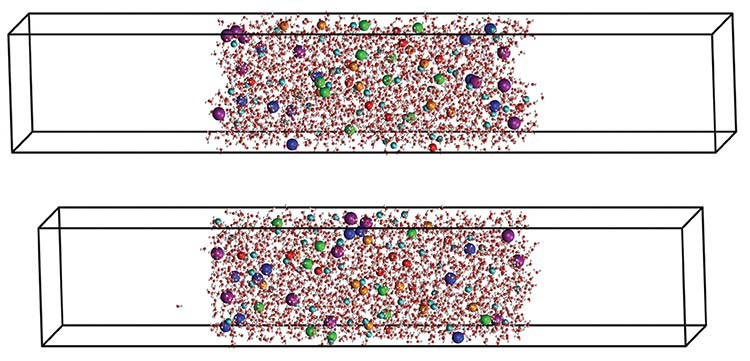Phys. Chem. Chem. Phys. 22, 10792–10801 (2020)
The microscopic picture of ions at the aqueous liquid–vapor interface continues to be an important and active area of research. Both experiments and simulations have shown that certain ions, such as Br− and I−, prefer to adsorb at the interface, but there is not yet a consensus as to the relative importance of various ion-specific properties that influence surface solvation. In a previous study, we systematically explored the effect of ion size on determining whether or not a monovalent ion would adsorb at the surface, and found that, for electrolyte mixtures represented by non-polarizable models, the larger/smaller anions are enriched/depleted at the interface. Here, we extend that study to include temperature effects enabling a van’t Hoff analysis of the enthalpic and entropic contributions. We perform configurational-bias Monte Carlo simulations in the Gibbs ensemble to investigate the partitioning of mixtures of differently sized ions at the aqueous liquid–vapor interface from 284.09 K to 347.22 K at a pressure of 1 atm. Ions are represented using our own previously developed models that vary only in size (i.e., the Lennard-Jones σ parameter changes, while all other parameters are held constant across ion types). System properties studied include surface tension, interfacial width, ion surface excess, number density profiles, z-dependent transfer free energy, enthalpy, entropy, and anion–cation coordination numbers.
